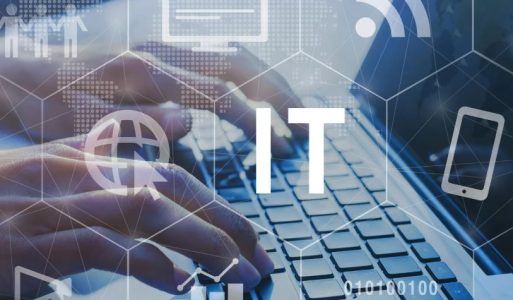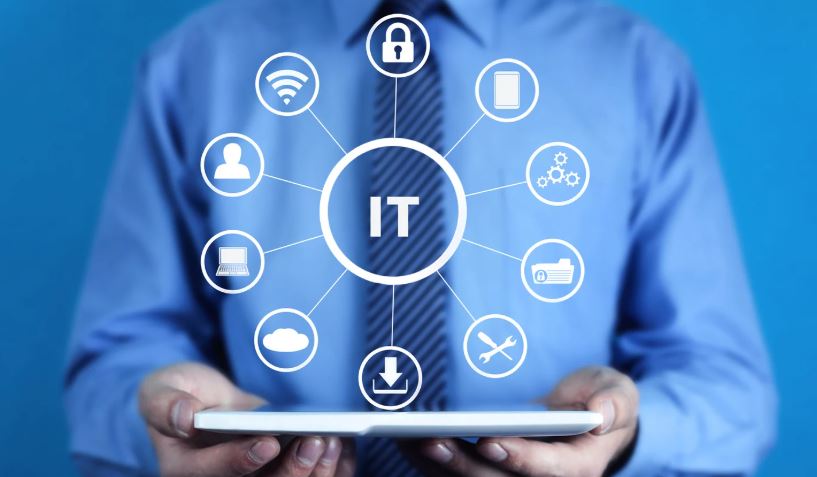The role of information technology (IT) in addressing environmental and human health challenges is transformative. IT serves as a powerful tool for monitoring, managing, and mitigating environmental issues while improving healthcare delivery.
By integrating innovative technologies such as Geographic Information Systems (GIS), remote sensing, and health informatics, IT has paved the way for smarter, more sustainable solutions to global challenges.
This blog explores the multifaceted role of Information Technology in environment and human health, highlighting its applications and benefits.
How Does Information Technology Help in Environmental Monitoring?

Information technology plays a pivotal role in environmental monitoring, providing tools and systems that help track changes in ecological systems and address environmental challenges.
With the integration of IoT devices, sensors, and advanced analytics, real-time data collection has become more precise and actionable.
Applications in Environmental Monitoring:
- Air Quality Monitoring: IT-driven sensors continuously measure pollution levels, alerting authorities to unsafe conditions.
- Water Resource Management: IoT systems monitor water quality and detect pollutants, ensuring the protection of aquatic ecosystems.
- Deforestation Tracking: Satellite imaging and GIS identify deforestation patterns, aiding reforestation initiatives.
| Feature | Example | Impact |
| Air Monitoring | IoT Sensors | Reduced health risks from pollution |
| Water Management | IoT Technology | Improved conservation practices |
| Wildlife Tracking | Digital Mapping | Better biodiversity management |
By leveraging IT, organizations can implement effective strategies to combat environmental degradation, fostering sustainability and healthier ecosystems.
What Are the Applications of GIS and Remote Sensing in Environmental Studies?
GIS and remote sensing have become indispensable tools in environmental studies, offering spatial data and analysis capabilities that were previously unattainable.
These technologies facilitate a detailed understanding of geographic and temporal changes in the environment, enabling targeted interventions.
Key Applications:
- Disaster Management: GIS maps identify flood zones, cyclone paths, and earthquake-prone areas, assisting in proactive planning and response.
- Urban Development: Remote sensing helps design sustainable urban layouts, balancing infrastructure development with ecological preservation.
- Agriculture: Farmers utilize GIS for soil analysis, crop health monitoring, and efficient resource allocation.
For instance, during disasters such as floods or wildfires, remote sensing satellites provide crucial real-time data to aid evacuation and recovery efforts.
Similarly, GIS enables predictive modelling to anticipate environmental changes, empowering researchers and policymakers to take proactive measures.
The integration of these technologies drives better planning, resource optimization, and resilience in environmental management.
How Does IT Contribute to Sustainable Development?

Information technology significantly contributes to sustainable development by streamlining processes, enhancing resource efficiency, and minimizing waste.
IT solutions are instrumental in achieving environmental goals and creating sustainable ecosystems for future generations.
Key Contributions:
- Smart Grids: IoT-based grids optimize electricity distribution, reducing energy loss.
- Waste Management Systems: Automated sorting and recycling systems enhance waste management efficiency.
- Digital Governance: E-governance platforms reduce paper consumption, promoting eco-friendly administrative practices.
| Area of Focus | IT Application | Impact |
| Energy Conservation | IoT-enabled Smart Grids | Lower energy consumption |
| Recycling Initiatives | Automated Systems | Improved waste management practices |
| Urban Sustainability | Digital Monitoring Tools | Reduced urban carbon footprint |
By aligning technological advancements with sustainable practices, IT accelerates the transition to a greener future.
Initiatives like smart cities exemplify how IT innovations can harmonize economic development with environmental preservation.
What is Role of Information Technology in Environment and Human Health?
The integration of information technology (IT) in environmental and health sectors has emerged as a powerful catalyst for addressing some of the most pressing global challenges.
IT serves as a bridge between environmental science and healthcare, fostering innovative solutions that enhance both human well-being and sustainability.
Advanced monitoring tools such as Geographic Information Systems (GIS), remote sensing, and Internet of Things (IoT) devices enable precise tracking of environmental changes.
These technologies provide real-time data on air and water quality, deforestation, and climate patterns, empowering policymakers and environmentalists to make informed decisions.
In the healthcare sector, IT enhances efficiency and accessibility through telemedicine, health informatics, and electronic health records (EHR).
Telemedicine platforms connect patients with doctors remotely, while health informatics streamlines disease surveillance and management.
What Are the Benefits of IT in Public Health Surveillance?

IT has revolutionized public health surveillance, enabling the timely detection and control of disease outbreaks. Digital systems enhance data accuracy, streamline communication, and improve decision-making in healthcare systems.
Benefits:
- Real-Time Data Monitoring: Platforms like HealthMap analyze global health data to track disease outbreaks.
- Predictive Analytics: AI-driven tools forecast disease trends, enabling proactive healthcare interventions.
- Data Centralization: Electronic Health Records (EHR) consolidate patient information for better accessibility and analysis.
IT empowers healthcare professionals and policymakers with tools to address public health challenges efficiently, ensuring better outcomes for communities.
How Does Telemedicine Enhance Healthcare Accessibility?
Telemedicine bridges the gap between healthcare providers and patients, particularly in underserved regions. By leveraging IT, telemedicine provides cost-effective, accessible, and quality healthcare.
Features of Telemedicine:
- Remote Consultations: Video conferencing tools enable patients to consult specialists without visiting hospitals.
- Health Monitoring Devices: Wearables track vitals like heart rate and glucose levels, alerting physicians in emergencies.
- E-Prescriptions: Digital systems streamline prescription sharing and medication management.
For example, in India, telemedicine services have reached rural areas where healthcare facilities are scarce. Initiatives like the National Digital Health Mission aim to expand telemedicine’s reach further, ensuring that quality healthcare becomes a reality for all.
What is the Role of Bioinformatics in Human Health?

Bioinformatics, a fusion of IT and biology, plays a transformative role in healthcare. It enables researchers to analyze complex biological data, leading to groundbreaking discoveries in medicine.
Applications:
- Genomic Research: Decoding DNA sequences identifies genetic predispositions to diseases.
- Drug Development: IT tools accelerate the discovery of effective drugs and vaccines.
- Personalized Healthcare: Bioinformatics facilitates tailored treatments based on individual genetics.
By combining computational algorithms with biological research, bioinformatics has revolutionized medical science.
From personalized medicine to advanced diagnostics, its contributions are pivotal in shaping the future of healthcare.
How Does IT Support Environmental Awareness and Education?
Information technology enhances environmental awareness and education by offering platforms for information dissemination and advocacy.
Examples:
- E-Learning Platforms: Websites and apps teach sustainable practices to a broad audience.
- Social Media Advocacy: Campaigns on platforms like Twitter and Facebook raise awareness about environmental issues.
- Interactive Simulations: Virtual reality tools educate users about ecological systems and conservation strategies.
In India, digital campaigns like “Swachh Bharat Abhiyan” have effectively used IT to spread awareness about cleanliness and waste management.
IT tools inspire individuals and communities to adopt sustainable lifestyles, fostering collective action for a healthier planet.
Conclusion
The role of information technology in environmental and human health is transformative, driving significant advancements in monitoring, management, and care.
IT empowers stakeholders with innovative tools like GIS, telemedicine, and bioinformatics, improving decision-making and fostering sustainability.
From combating climate change to enhancing healthcare access in rural areas, IT bridges critical gaps and promotes progress.
As the world faces growing environmental and health challenges, the integration of IT becomes ever more essential.
By continuing to innovate and implement IT-driven solutions, we can ensure a future that is healthier, more equitable, and environmentally sustainable.
FAQs
What is the role of IT in environmental monitoring?
IT enables real-time tracking of environmental changes through GIS, remote sensing, and IoT devices, helping to address ecological challenges effectively.
How does IT contribute to public health?
IT supports public health by improving disease surveillance, enabling telemedicine, and streamlining healthcare delivery systems.
What is GIS used for in environmental studies?
GIS is used for mapping, analyzing, and managing geographic data related to environmental changes, urban planning, and disaster management.
How does telemedicine improve healthcare access?
Telemedicine provides remote consultations and e-prescriptions, ensuring healthcare accessibility in underserved regions.
How does IT promote sustainable development?
IT promotes sustainability through smart grids, efficient waste management systems, and paperless e-governance practices.
How can IT raise environmental awareness?
IT raises awareness through e-learning platforms, social media campaigns, and interactive tools, educating communities about sustainability.




